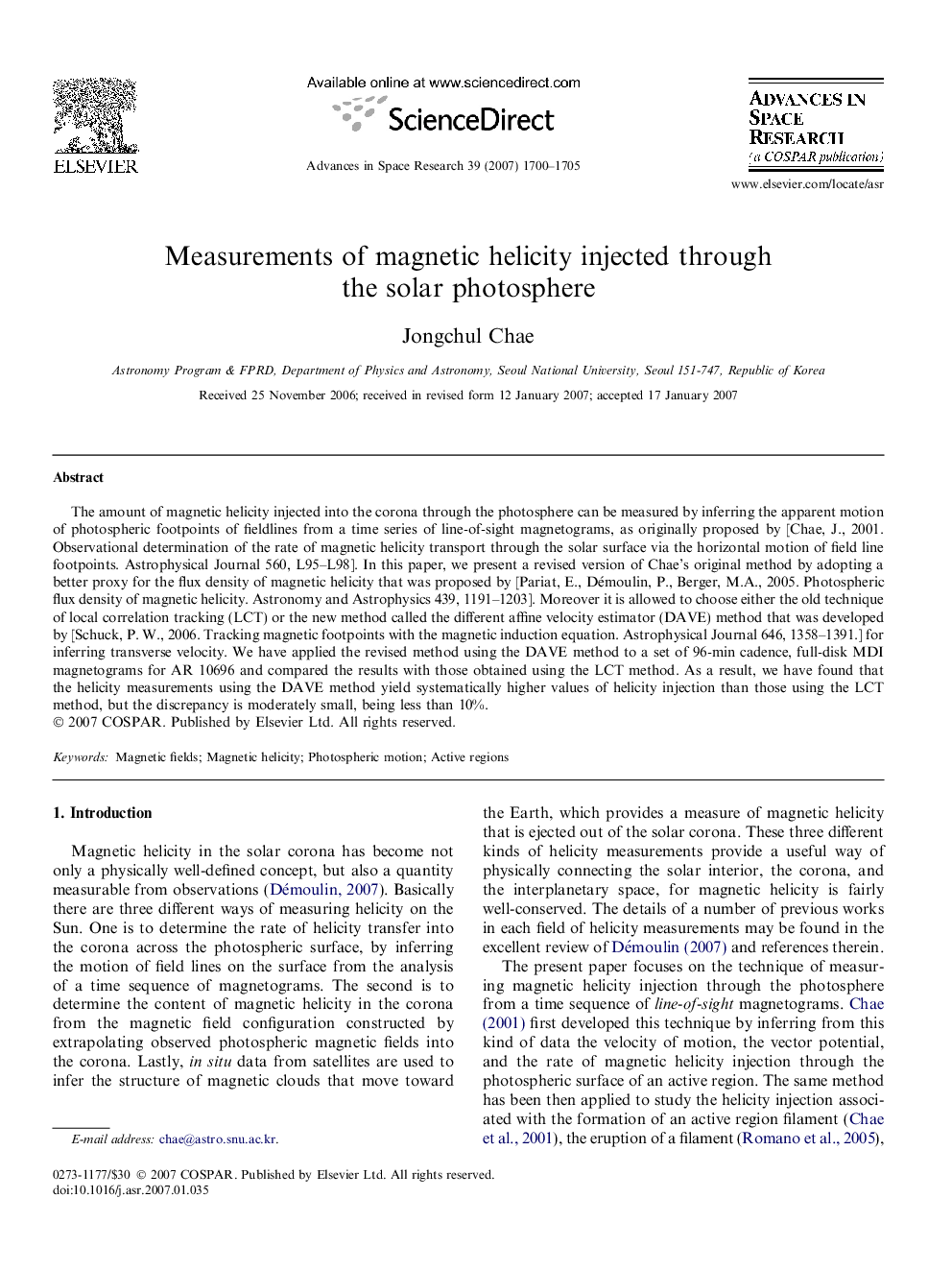| Article ID | Journal | Published Year | Pages | File Type |
|---|---|---|---|---|
| 1768148 | Advances in Space Research | 2007 | 6 Pages |
Abstract
The amount of magnetic helicity injected into the corona through the photosphere can be measured by inferring the apparent motion of photospheric footpoints of fieldlines from a time series of line-of-sight magnetograms, as originally proposed by [Chae, J., 2001. Observational determination of the rate of magnetic helicity transport through the solar surface via the horizontal motion of field line footpoints. Astrophysical Journal 560, L95-L98]. In this paper, we present a revised version of Chae's original method by adopting a better proxy for the flux density of magnetic helicity that was proposed by [Pariat, E., Démoulin, P., Berger, M.A., 2005. Photospheric flux density of magnetic helicity. Astronomy and Astrophysics 439, 1191-1203]. Moreover it is allowed to choose either the old technique of local correlation tracking (LCT) or the new method called the different affine velocity estimator (DAVE) method that was developed by [Schuck, P. W., 2006. Tracking magnetic footpoints with the magnetic induction equation. Astrophysical Journal 646, 1358-1391.] for inferring transverse velocity. We have applied the revised method using the DAVE method to a set of 96-min cadence, full-disk MDI magnetograms for AR 10696 and compared the results with those obtained using the LCT method. As a result, we have found that the helicity measurements using the DAVE method yield systematically higher values of helicity injection than those using the LCT method, but the discrepancy is moderately small, being less than 10%.
Related Topics
Physical Sciences and Engineering
Earth and Planetary Sciences
Space and Planetary Science
Authors
Jongchul Chae,
